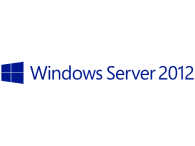 Activating Server Core
Activating Server Core
Depending on the output of the command you entered to check the status you can activate your Server Core installation in a couple of ways:
Activating with a pre-entered product key
When you entered a product key when you installed Windows Server 2008 but didn’t select the option to activate automatically you need to give a command to start activation:
start /w slmgr.vbs -ato
When done check the status of Windows Product Activation again.
Entering a product key and activating
When you choose to install Windows Server 2008 without entering a product key at the product key screen you need to enter a product key and activate your installation after that. To enter your 25-digit product key and activate afterwards, simply type the following commands:
start /w slmgr.vbs -ipk ABCDE-FGHIJ-KLMNO-PQRST-UVWXY
start /w slmgr.vbs -ato
Where you need to replace ABCDE-FGHIJ-KLMNO-PQRST-UVWXY with the Windows product key from your Certificate of Authenticity. When done check the status of Windows Product Activation again.
Switching from KMS to MAK
When the string VOLUME_KMSCLIENT appears as output of the slmgr.vbs -dli command, it means your Server Core installation is using KMS activation, which is one of the activation options in Volume Activation 2.0. If you don’t have a KMS server or know the server isn’t going to be in the vicinity of your KMS Server every week you’re going to have a problem.
You can manually activate your installation of Windows Server 2008 by entering your Multiple Activation Key (MAK). You can find your Multiple Activation Keys (MAKs) below the list with other product keys when logged in to your MSDN Subscription.
To switch from KMS to MAK simply enter your Multiple Activation Key and activate afterwards. The commands are the same as in the previous activation method:
start /w slmgr.vbs -ipk ABCDE-FGHIJ-KLMNO-PQRST-UVWXY
start /w slmgr.vbs -ato
Setting different KMS settings
A Windows Server 2008 installation will try to reach a Key Management Services (KMS) Server every 10.080 minutes (every week) to check its license. By default Windows Server 2008 and Windows Vista, configured as KMS clients will lookup the KMS Server in DNS requesting the contents of the SRV record for _vlmcs._tcp and connect using TCP 1688.
Although you can’t change this time skew, you can edit the name and portnumber of the KMS server your Windows Server 2008 installation will try to reach. Particularly in scenarios where security is at stake you can manually enter KMS Server information to your Windows Server 2008 installation using the following command:
start /w slmgr.vbs -skms fqdn.of.the.KMS.server[:port]
Where fqdn.of.the.KMS.server can be replaced with the Fully Qualified Domain Name (FQDN) of your Key Management Services (KMS) Server. Optionally you can specify a port to connect with when you don’t want communication over TCP 1688. Of course your KMS Server on the other side must be configured properly as well.
To reset your KMS client to default settings use the following command:
start /w slmgr.vbs -ckms
Activating without Internet
Server Core might be used in environments without Internet access. I know this sounds silly but I know of a few and I don’t go out as much as some of my fellow bloggers do…
In this scenario you activate your Server Core installation by first running:
start /w slmgr.vbs –dti
Write down the Installation ID, which consists of nine blocks of six digits. After that call your local Microsoft Activation Call Center and write down the activation key, which consists of eight blocks of six digits you receive in response to punching in the Installation ID.
Now run:
start /w slmgr.vbs –atp GUID ActivationID
Where ActivationID must be notated as one long 48-digit string.
Run the command to check your licensing information (above) to confirm your Server Core installation was activated properly.
Switching from MAK to KMS
Another scenario might be you want to switch back from using a Multiple Activation Key (MAK) to Key Management Services (KMS) Servers. This might be due to the fact you want more control over your in-use licenses.
To switch you need to enter your KMS product key. If you were paying attention before you might have already found the problem: Windows Server 2008 media that use KMS by default, don’t allow you to enter a product key, nor do they have a Certificate of Authenticity with a product key on it… now where do you get the KMS product key!?
That’s easy. It’s located on the Windows Server 2008 DVD/ISO in the file pid.txt in the sources folder. To switch from MAK to KMS simply enter your Multiple Activation Key and activate afterwards. The commands are the same as for switching from KMS to MAK:
start /w slmgr.vbs -ipk ABCDE-FGHIJ-KLMNO-PQRST-UVWXY
start /w slmgr.vbs -ato
Where ABCDE-FGHIJ-KLMNO-PQRST-UVWXY is your KMS product key.When done check the status of Windows Product Activation again.
this usefull information is thanks to https://blogs.dirteam.com/blogs/sanderberkouwer/archive/2008/04/01/activating-server-core.aspx